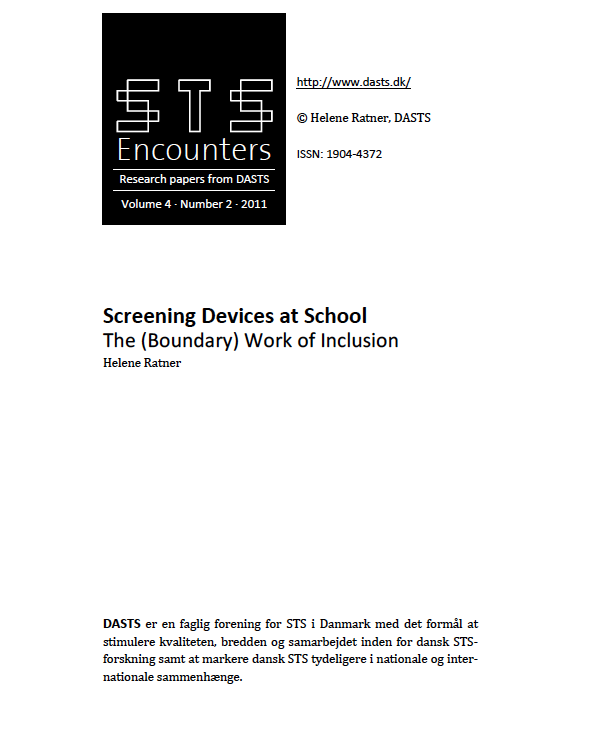Screening Devices at School
The (Boundary) Work of Inclusion
DOI:
https://doi.org/10.7146/stse.v4i2.135125Abstract
Including children with special needs in the common school has become an international political priority over the past 15-20 years. In reponse, new social technologies have emerged. This article analyses one such technology, an action plan called a SMTTE, and proposes that we understand it as a “screening device”. It is a “device” in the sense that it distributes agency, and it “screens” in the word’s multiple meanings: “projecting” as in creating a viewer position; “sifting” and “systematizing” as in discriminating “knowledge” from mere “opinionings”; and “protecting” teachers from noise. Using ethnographic data from a Danish school, the article explores, first, the script and agencement of the SMTTE and, second, how the screening properties of the SMTTE are achieved, including how these properties challenge management-teacher relations when the SMTTE travels to other networks at the school. The SMTTE does not form a seamless part of the school. Rather, its screening properties constitute their own trajectory, which interferes with other matters of concern at the school.

Downloads
Published
How to Cite
Issue
Section
License

This work is licensed under a Creative Commons Attribution-NonCommercial-ShareAlike 4.0 International License.
Starting with volume 15, articles published in STS Encounters are licensed under Attribution-NonCommercial-ShareAlike 4.0 International (CC BY-NC-SA 4.0). The editorial board may accept other Creative Commons licenses for individual articles, if required by funding bodies e.g. the European Research Council. Previous articles are not licensed under Creative Commons. In these volumes, all rights are reserved to the authors of the articles respectively.




